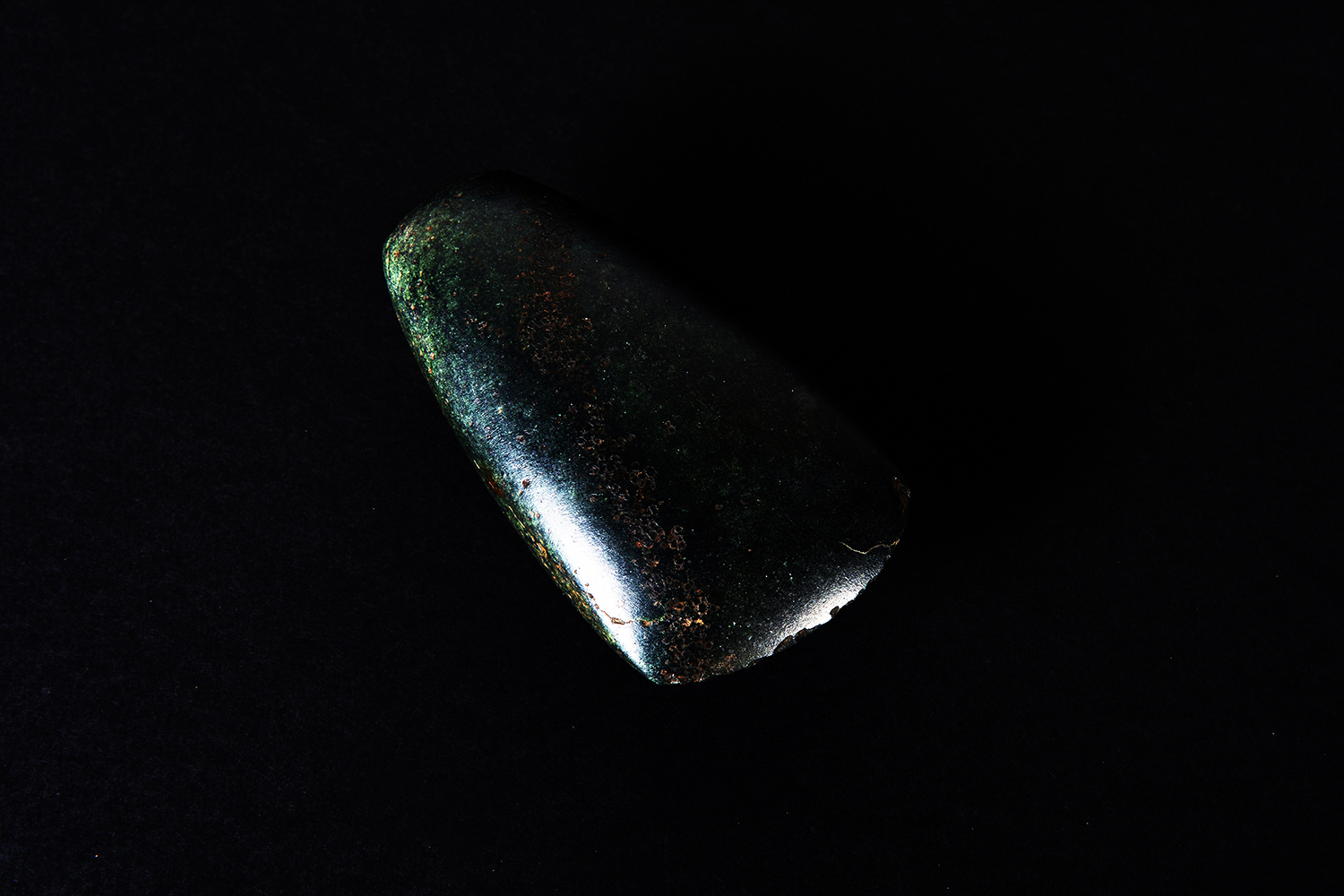
Jade
5.600-4.500 BC
Ripoll (Ripollès)
The Archaeological Museum of Girona has several polished stone axes. The one we are looking at here is made of very compact black igneous rock. This rock allows careful buffing to give it a fine, well-polished surface. It narrows towards the end where the handle was fitted. At the other end, the two wide sides meet to form the two bevels that join at the cut, the useful part of the axe. It was found in Ripoll. Its maximum dimensions are 7.8 cm long, 4.3 cm wide and 2.2 cm thick.
The type of rock, the delicacy of the work and its small size place it in the category of small axes meticulously carved from hard rock. They are believed to have been prestige objects for their owners and more symbolic than functional.
The polished stone axes found in different parts of Europe have attracted attention since ancient times. Finding one was a good omen. In modern times, contacts with primitive peoples who used similar tools suggest that they could be weapons or tools from a remote past. Until then they had been considered lightning stones. It used to be believed that each lightning bolt carried one of these stones on its tip and that it killed, set fire to or shattered wherever it fell. It was also believed that lightning could not strike in the same place, which made them valuable for protecting people and property. The belief in lightning stones in the Old World was universal and reached as far as Japan.
In the second half of the 19th century, when the periods of prehistory began to be established, polished stone axes served to distinguish the age now called the Neolithic or “new stone” from the previous period, called the Palaeolithic or “old stone”, which was characterised by simply carved stone axes and other tools. Today, the Neolithic (6000-4700 BC) is best characterised by the beginnings of agriculture and stockbreeding and the types of pottery allow the phases to be established, although polished stone axes are still very characteristic. They are traditionally considered as axe or adze blades. The narrowest end is what was used to attach them to the handle either directly or through a complementary piece. The axe was placed at a slightly acute angle to the handle and the bevelled end, unlike our axes, was in a transverse position on the handle. They were no doubt also used as hoes to till the soil and uproot weeds.
In Catalonia, most of the polished axes or adzes that were really of use were fashioned from a metamorphic rock known as hornfels, which is abundant in the Pyrenees. It is washed down by rivers in the form of flattened pebbles. The axe was made from the longest diameter of the pebble, by rough-hewing its sides. A stone base of the same length and thickness as the pebble and of a suitable width was thus obtained. One end was also made more pointed and the other, bevelled and cut, was finished off by polishing it with an abrasive rock. Workshops where these tools were made are found on the banks of the River Segre.
Axes like this one in the Girona museum are exceptional. Hence their assumed symbolic and prestige value, attested by the fact it is those that are usually found in graves. That axes could have added value and were used in trade is shown by the fact that until recently this was still the case among the natives of New Guinea, who manufactured them simply as prestige goods. Another example of this are the finds in much of Western Europe of long (over 30 cm), very attractive green axe blades made of jade from the Italian Alps. They are clearly symbolic pieces that gave prestige to their owners, who would hardly have dared use them. They are often found in large, opulent tombs, such as the dolmens of Brittany
Narcís Soler
